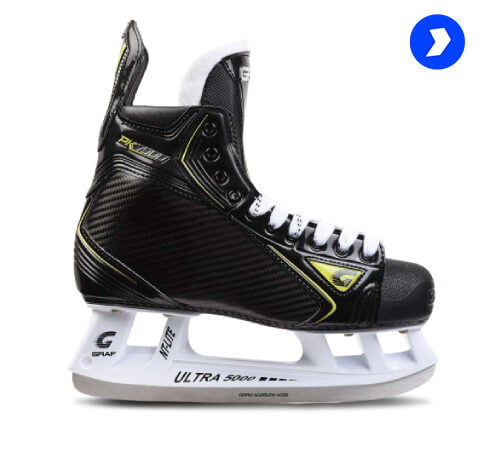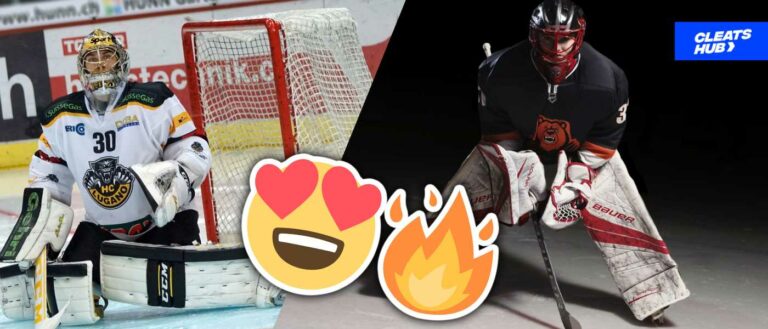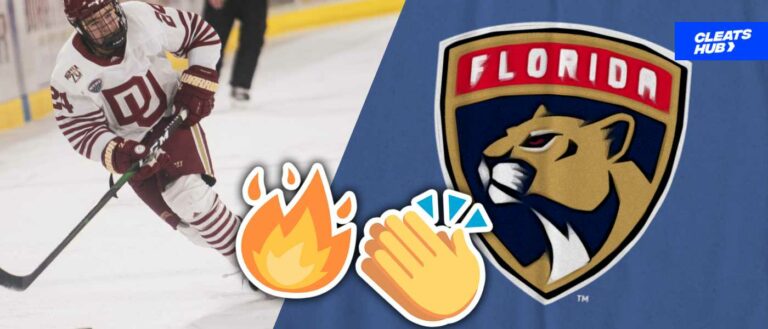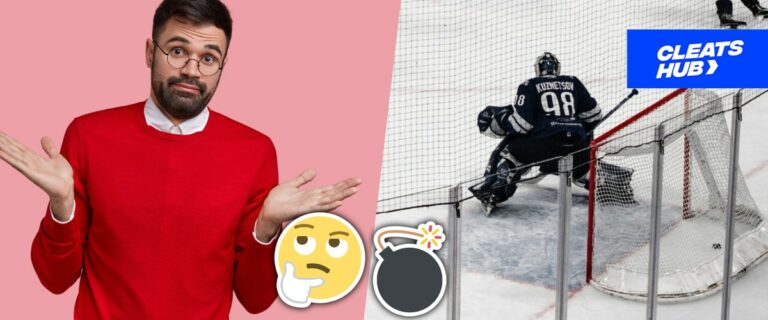What is the Difference between Junior and Youth Ice Hockey Skates?
The ice hockey skate age group ranges into four categories: junior, intermediate, senior, and youth. These size ranges are determined by factors such as height, weight, chest and waist measurements, age, and other pertinent measurements.
Similarities Between Junior And Youth Ice Hockey Skate
Hockey skates for juniors and younger players are roughly the same size. They both, for instance, fit 1.0 size smaller than a boy’s shoe size. For junior or youth athletes whose feet quickly expand, choosing a skate just a half-size smaller is an alternative to allow more room for growth.
Differences Between Junior and Youth Ice Hockey Skate
Youth hockey skates and junior ice hockey skates have different features. However, these skates are designed to accommodate children nine years of age and younger or those who wear shoes in the 1.5 to 13.5 small kids size. In contrast, junior skates are appropriate for children aged 7 to 13 or those who wear children’s sizes 2 to 7.
Bear in mind that manufacturers’ sizing might differ. Checking each product page or a reliable ice hockey review site like cleatshub.com for details on the fitting of that particular skate is crucial.

Youth Hockey Skates
The smallest size range for hockey skates is known as youth hockey skates. These are designed to fit toddlers and young children with a US shoe size of 1.5 or less who are nine years old or younger. They come in children’s sizes 8 to 13.5.
Young hockey players need a boot that will quickly break in and tend to be more flexible and relaxed. With softer hockey skates, they may develop their stride and build up their ankle strength. Senior and junior players, however, might require a strong boot and firm outsole.
Skating is challenging enough to learn without having to compete with far more experienced skaters wearing elite-level composite boots.
How To Size A Youth Hockey Skate
Finding youth hockey skates that fit properly is simple. In comparison to the child’s typical street shoes, youth skates should be scaled down one to two sizes. The toes should hardly touch the toe cap, and the heel should have little more than a quarter-inch of space.
When laced, skates should feel snug but not too tight. Small feet grow quickly, so it’s OK to size up by about a half size. But don’t go much larger than that, as you run the risk of blisters, and the boots may also last less time.
Youth Skates Sizing Information
| Recommended Skate Size | US Shoe Size | EUR Size |
|---|---|---|
| 8.5 | 10 | 26 |
| 9 | 10.5 | 26.5 |
| 9.5 | 11 | 27 |
| 10 | 11.5 | 27.5 |
| 10.5 | 12 | 28 |
| 11 | 12.5 | 29 |
| 11.5 | 13 | 30 |
| 12 | 13.5 | 30.5 |
| 12.5 | 1 | 31 |
| 13 | 1.5 | 31.5 |
| 13.5 | 2 | 32 |
Junior Hockey Skates
Junior hockey skates are designed to accommodate children between the ages of 7 and 13, with US shoe sizes ranging from 2 to 6.5.
How To Size A Junior Hockey Skate
The optimal strategy for sizing is to get junior hockey skates that are one size smaller than your child’s shoe size. This ensures a tighter, more stable fit because ice skates are often worn on the foot.
Skates that are too loose put you in danger of falling or twisting your ankle, among other ailments, since they are the wrong size. The following helpful table will assist you in choosing the right junior hockey skate size for your child:
Junior Skate Sizing Information
| Recommended Skate Size | US Shoe Size | EUR Size |
| 1 | 2.5 | 32.5 |
| 1.5 | 3 | 33 |
| 2 | 3.5 | 34 |
| 2.5 | 4 | 34.5 |
| 3 | 4.5 | 35 |
| 3.5 | 5 | 36 |
| 4 | 5.5 | 36.5 |
| 4.5 | 6 | 37.5 |
| 5 | 6.5 | 38.5 |
| 5.5 | 7 | 39 |
How To Find Your Ice Hockey Skate Size At Home
You may calculate your hockey skate size at home in two different methods. The first method is the quickest, but you’ll need to know your shoe size—ideally, your dress shoe size since those are the most accurate. The second method is a little trickier since you need to trace and measure your feet. Yet, it provides the most accurate measurement.
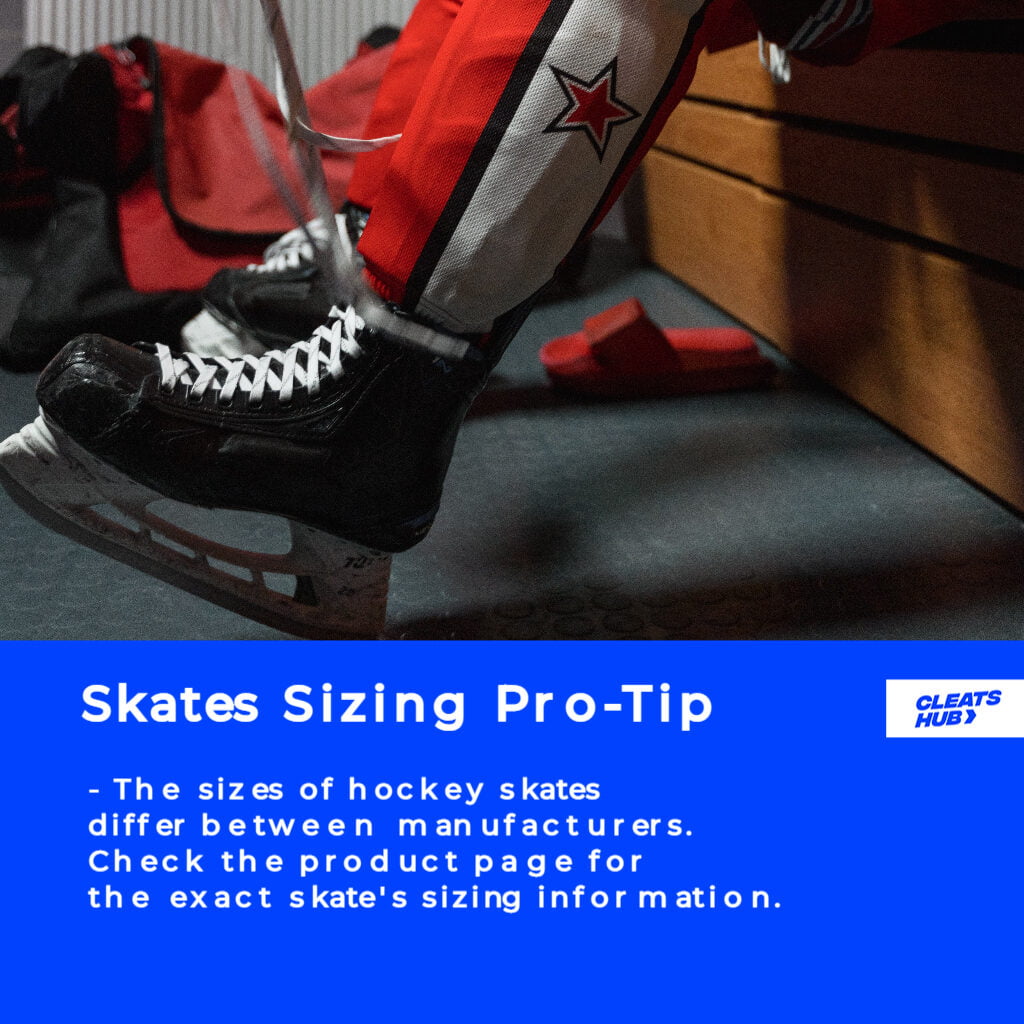
METHOD 1
The normal fit of senior hockey skates is 1.5 sizes smaller than a man’s shoe size. Youth and junior hockey skates, on the other hand, are one size smaller than a boy’s shoe size. A player wearing a senior size 6.5 hockey skate, for instance, would put on a men’s 8.0 shoe size. For junior or juvenile players whose feet quickly develop, choosing a half-size smaller skate will give them more room to expand.
Always check the product page for precise skate sizing information because different manufacturers’ hockey skate sizes vary. Regular D, R, or E width Medium Volume Fitted skates should be comfortable for the majority of players to use.
METHOD 2
The length, width, and appropriate kind of skate may be determined using this approach, which is the most advanced and accurate. You only need some firm ground to stand on, some blank paper, a pen or pencil, and a ruler or measuring tape to get started.
Step 1. Set the paper down on a sturdy surface.
Step 2. If you use skate socks, put them on now and walk onto the paper with enough room around your full foot for them to fit.
Step 3: Holding the pen or pencil while standing, start tracing. While outlining your foot, maintain a perpendicular line with the pen or pencil to the paper. You can’t measure beneath your foot if you keep it perpendicular; thus, your foot outline will be wrong.
Step 4: Calculate the distance between your toes’ farthest points and the heel’s tip in centimeters. This will be the measurement of your foot length. The breadth of your foot is now measured at the broadest place on your forefoot.
Step 5. Repeat Steps 1-4 for your other foot. This can be done on the backside of the paper, or you can use a new, blank piece.
Step 6: Divide your measured left foot length by your left foot width. Your left foot width ratio is shown below. Repeat this on your right foot to determine your right foot width ratio.
How Tight or Loose Should Hockey Skates Fit?
What is the ideal fit for hockey skates? For juvenile sizes, there should be room for one finger between the inside of the boot and the heel of the foot. This is merely being done to allow for seasonal growth. Adult skates don’t require this extra space because they are made to fit the foot precisely.
To put on a skate, sit down and firmly place your heel into the back of the boot; your big toe should barely touch the toe cap. Tighten the laces through the first two or three eyelets when the skate is snug around the toe.
To secure your heel firmly in the heel pocket, tighten the laces along the curve from the foot to the ankle. Keep your foot firmly planted on the ground as you lace the skate.
Final Tips
What size ice skates should I buy? can be a question you have if you have never gone shopping for a pair. Typically, you should get a skate that is one to eleven and a half sizes smaller than the size of your shoes.
Skates run smaller than shoes and are more form-fitting. You shouldn’t be concerned if your skates are a different size than your street shoes. Obviously, the fit must be ideal, but in most cases, going up a street shoe size won’t help.
The most crucial factors to consider when choosing youth ice hockey skates are fit and feel. Hockey should be enjoyable. That must feel satisfying. A comfortable set of child ice hockey skates is essential to fostering a great first impression and a lifelong passion for the sport.
Psstt…. The Top Performing Cleats




